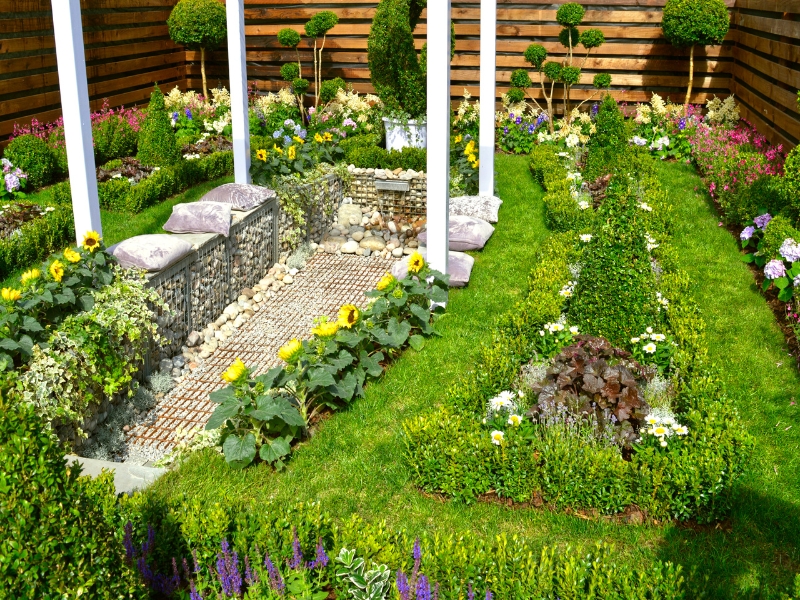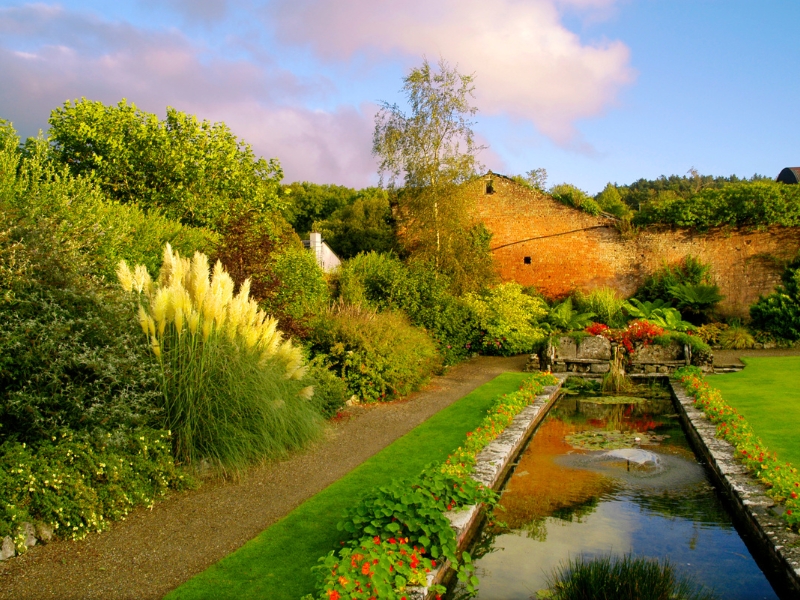
Creating a beautiful garden doesn’t have to break the bank. With the right choices, you can enjoy an attractive outdoor area without spending a fortune. This guide will help you explore the cost-effective garden style, understand factors influencing garden costs, and maximise value while staying within your budget.
What factors affect the cost of a garden style?
Several factors can impact the overall cost of a garden style. Understanding these can help you make informed decisions:
- Design complexity: Intricate designs with multiple elements, such as water features, elaborate paving, or intricate plant arrangements, can be expensive. Simpler designs generally cost less. The complexity of the design can also affect the project’s time, which influences the overall cost.
- Plant selection: Choosing high-maintenance or exotic plants can drive up costs. Opting for native plants or low-maintenance varieties can be more budget-friendly. Choosing sustainable gardening practices, such as using organic fertilisers and reducing water waste, can also help lower long-term maintenance costs.
- Soil and site preparation: The soil condition and the required preparation level can affect costs. Sites that need extensive preparation or soil improvement will incur higher expenses. Proper soil preparation can also enhance plant health and reduce future maintenance needs.
- Materials and features: The choice of materials for paving, walls, and other features plays a significant role. High-end materials can be costly, while more affordable options help keep costs down. Selecting durable materials can also extend the lifespan of your garden features, potentially saving money in the long run.
- Labour costs: Professional landscaping services have their costs. DIY projects might save money, but they come with their own set of challenges and time commitments. Hiring professionals for specific tasks can sometimes be more cost-effective than tackling everything yourself, especially for complex jobs.
What are the most cost-effective garden styles?
When considering a cost-effective garden style, looking at designs that offer great value without excessive expenses is essential. Here are some options:
- Low-maintenance gardens: These gardens focus on simplicity and ease of care. Features often include hardy plants, minimal lawn areas, and low-maintenance hardscaping like gravel paths.
- Native gardens: Using plants native to your area can reduce costs as these plants are adapted to local conditions, require less water, and generally need less upkeep.
- Cottage gardens are known for their charming, informal appearance. They often use perennial plants and self-seeding flowers. Because they require fewer inputs and maintenance, cottage gardens can be cost-effective.
- Minimalist gardens: A minimalist approach focuses on clean lines and a few key elements. This style can be budget-friendly due to its simplicity and use of fewer materials.
- Edible gardens: Incorporating vegetable beds, herbs, and fruit trees can be cost-effective if you enjoy growing your produce. These gardens can also double as attractive green spaces.

How does DIY vs. Professional help impact garden costs?
Choosing between a DIY approach and hiring professionals can significantly affect your garden costs. Here’s a breakdown:
- DIY approach:
- The pros are lower labour costs, complete control over the project, and the satisfaction of doing it yourself.
- The cons are that it requires time, effort, and some gardening skills. Mistakes can lead to additional costs if professional help is needed later.
- Professional help:
- Pros: Expertise and experience can lead to a more polished result, often faster and with fewer mistakes. Professionals can offer advice on materials and cost effective garden design.
- Cons: Higher upfront costs for labour and design services.
For many, a combination of DIY and professional help can offer a balanced approach. For instance, you might design the garden yourself but hire professionals for installation or complex tasks.
What are the hidden costs of garden design and maintenance?
Understanding the hidden costs can help you budget more effectively. These might include:
- Ongoing maintenance: The cost of regular maintenance, such as weeding, pruning, and watering. Even low-maintenance gardens require some upkeep.
- Watering systems: Install irrigation systems or deal with high water bills, especially during dry periods.
- Soil Amendments: Costs for soil tests and amendments to ensure plants thrive.
- Pest and disease control: Regular treatments to manage pests and diseases can add to your expenses.
- Replacement costs: Plants or materials that fail or need replacing over time.
How can you maximise your garden style while staying within budget?
To get the most out of your garden budget, consider these strategies:
- Plan and prioritise: Start with a clear plan and prioritise essential elements. Focus on what will give you the most value for your money.
- Choose durable materials: Invest in quality materials that last longer, reducing the need for replacements.
- Start small: Begin with a smaller area and expand over time. This approach allows you to spread out costs and make adjustments as needed.
- Utilise native plants: They are adapted to your local climate and often require less water and maintenance, saving you money in the long run.
- Look for sales and discounts: Take advantage of seasonal sales, discounts, and bulk buying for materials and plants.

What are the best practices for choosing a cost-effective garden style?
When selecting a garden style that aligns with your budget, keep these best practices in mind:
- Assess your space: Understand your garden’s size, shape, and conditions. Choose a style that complements your space and requires minimal alterations. Proper assessment can prevent costly modifications down the line.
- Set a realistic budget: Determine how much you’re willing to spend and stick to it. Include a buffer for unexpected costs. Review and adjust your budget regularly as needed to accommodate any plan changes.
- Research plant varieties: Choose plants suited to your climate and soil conditions. Native and drought-tolerant plants are often more cost-effective. Additionally, consider plants’ growth rate and size to avoid frequent replacements.
- Consider long-term costs: Consider maintenance and water needs. A garden that requires less ongoing care can save money in the long term. Factor in seasonal adjustments and potential repairs to ensure long-term affordability.
- Consult professionals: Even if you plan to DIY, consulting with a professional can provide valuable insights and help you make informed decisions. Their expertise can help you avoid common pitfalls and ensure your garden remains cost-effective.
Let’s create your dream garden together
If you’re ready to create a beautiful, cost-effective garden, All Green Gardening & Landscaping is here to help. Our team of experts can assist with everything from design to maintenance, ensuring you get the most value from your investment. Contact All Green Gardening & Landscaping today to get started on your garden transformation!
